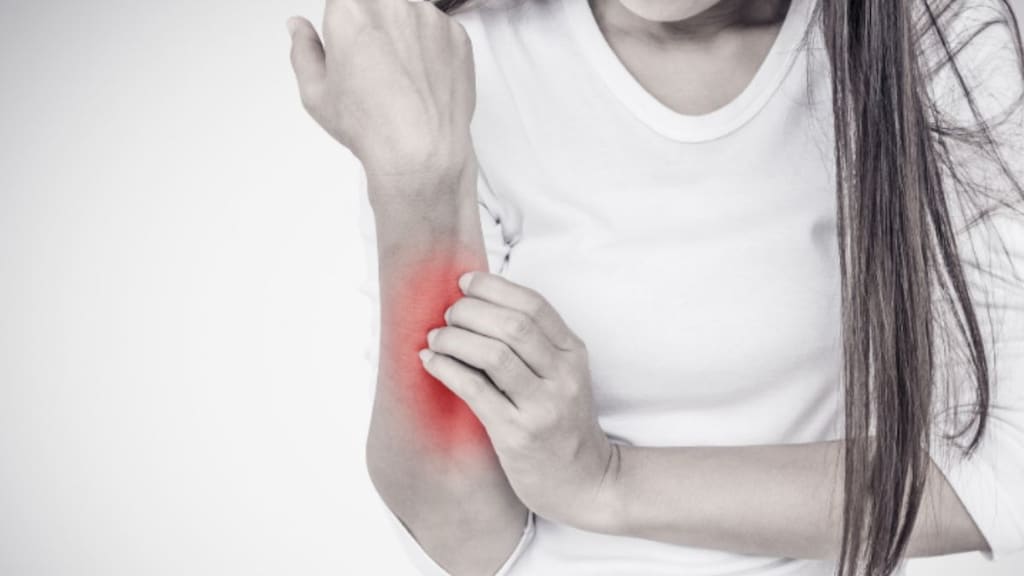Dosage Forms
Excipient information presented when available (limited, particularly for generics); consult specific product labeling.
Oil, Otic, as acetonide:
DermOtic: 0.01% (20 mL) [contains isopropyl alcohol, peanut oil]
Flac: 0.01% (20 mL) [contains isopropyl alcohol, peanut oil]
Generic: 0.01% (20 mL)
Pharmacology
Mechanism of Action
A synthetic fluorinated corticosteroid of low-to-moderate potency. The mechanism of action for all topical corticosteroids is not well defined, however, is believed to be a combination of anti-inflammatory, antipruritic, and vasoconstrictive properties.
Use: Labeled Indications
Relief of chronic eczematous external otitis
Contraindications
Hypersensitivity to fluocinolone or any component of the formulation; Note: Contains peanut oil
Canadian labeling: Additional contraindications (not in US labeling): Absent or perforated tympanic membrane; tympanostomy tube (ear tube) is present; untreated ear infections (bacterial, fungal, or viral infections); application to the eye or around the eye
Dosage and Administration
Dosing: Adult
Chronic eczematous external otitis: Otic: Five drops into the affected ear twice daily for 1 to 2 weeks
Dosing: Geriatric
Refer to adult dosing.
Dosing: Pediatric
Chronic eczematous external otitis: Children ≥2 years and Adolescents: Otic: 5 drops into the affected ear twice daily for 1 to 2 weeks
Administration
To apply drops, tilt head to one side so that the ear is facing up. Pull the ear lobe backward and upward and apply drops into the ear. Keep head tilted for about a minute to allow the drops to penetrate lower into the ear canal. Gently pat excess material dripping out of the ear using a clean cotton ball.
Storage
Store a controlled room temperature of 20°C to 25°C (68°F to 77°F).
Drug Interactions
There are no known significant interactions.
Adverse Reactions
Frequency not defined.
Dermatologic: Acneiform eruptions, allergic contact dermatitis, burning, dryness, erythema, folliculitis, irritation, itching, hypopigmentation, keratosis pilaris, miliaria, skin atrophy, striae
Otic: Ear infection
Warnings/Precautions
Concerns related to adverse effects:
- Adrenal suppression: May cause hypercortisolism or suppression of hypothalamic-pituitary-adrenal (HPA) axis, particularly in younger children or in patients receiving high doses for prolonged periods. HPA axis suppression may lead to adrenal crisis. Withdrawal and discontinuation of a corticosteroid should be done slowly and carefully. Particular care is required when patients are transferred from systemic corticosteroids to inhaled products due to possible adrenal insufficiency or withdrawal from steroids, including an increase in allergic symptoms. Adult patients receiving >20 mg per day of prednisone (or equivalent) may be most susceptible. Fatalities have occurred due to adrenal insufficiency in asthmatic patients during and after transfer from systemic corticosteroids to aerosol steroids; aerosol steroids do not provide the systemic steroid needed to treat patients having trauma, surgery, or infections.
- Contact dermatitis: Allergic contact dermatitis can occur, it is usually diagnosed by failure to heal rather than clinical exacerbation.
- Infection: Steroids may mask infection; prolonged use may result in secondary infections due to immunosuppression.
- Systemic effects: Adverse systemic effects may occur when used on large areas of the body, denuded areas, or for prolonged periods of time. Infants and children may be more susceptible to systemic toxicity from equivalent doses due to larger skin surface to body mass ratio.
Dosage form specific issues:
- Peanut oil: DermOtic Oil contains peanut oil; use caution in peanut-sensitive individuals.
Monitoring Parameters
Signs of bacterial or fungal infection
Pregnancy
Pregnancy Risk Factor
C
Pregnancy Considerations
Adverse events have been observed with corticosteroids in animal reproduction studies. In general, the use of topical corticosteroids during pregnancy is not considered to have significant risk; however, intrauterine growth retardation in the infant has been reported (rare). The use of large amounts or for prolonged periods of time should be avoided.
Patient Education
- Discuss specific use of drug and side effects with patient as it relates to treatment. (HCAHPS: During this hospital stay, were you given any medicine that you had not taken before? Before giving you any new medicine, how often did hospital staff tell you what the medicine was for? How often did hospital staff describe possible side effects in a way you could understand?)
- Patient may experience burning or itching. Have patient report immediately to prescriber severe application site irritation or signs of skin changes (acne, stretch marks, slow healing, or hair growth) (HCAHPS).
- Educate patient about signs of a significant reaction (eg, wheezing; chest tightness; fever; itching; bad cough; blue skin color; seizures; or swelling of face, lips, tongue, or throat). Note: This is not a comprehensive list of all side effects. Patient should consult prescriber for additional questions.
Intended Use and Disclaimer: Should not be printed and given to patients. This information is intended to serve as a concise initial reference for health care professionals to use when discussing medications with a patient. You must ultimately rely on your own discretion, experience, and judgment in diagnosing, treating, and advising patients.

